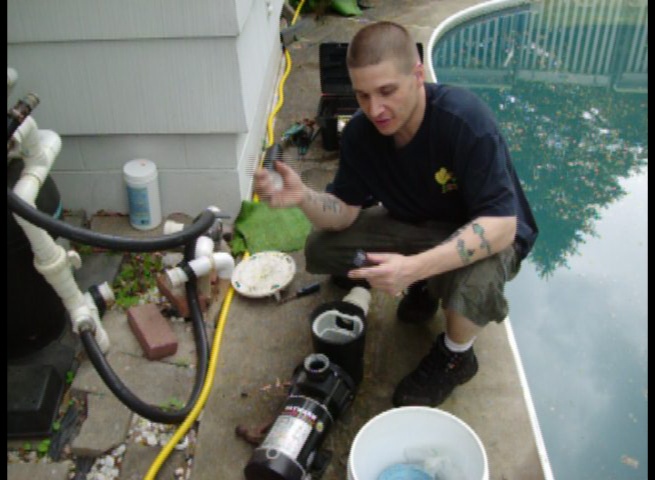Marketing
Pool chlorinator hook up - Šakovo
Chlorine Generators

Dating Site: Pool chlorinator hook up
Coat the plumbing ends with glue and primer. Hold the pipe in place for 30 seconds until the glue sets. The chlorinator connects directly to the plumbing of the pool system.

Some other brands will use a hose that will connect from the top of the pool pump discharge and then connect to a mutliport valve on the top of the pool filter. I will never buy anything from this company again.

Chlorine Generators - Saltwater chlorinators use electrolysis to break down ordinary table salt, and after a series of chemical reactions, produce chlorine. Make sure to tighten all hose clamps on the inlet and the outlet of the swimming pool Chlorine feeder as well.

Saltwater chlorinators drastically reduce the amount of chemicals you need to add to your pool, making your water healthier and safer, while cutting back on chemical costs. Saltwater chlorinators use electrolysis to break down ordinary table salt, ohok after a series of chemical reactions, produce chlorine. Owning a salt chlorination system does not mean your pool is completely chlorine or chemical free. It means that it uses a generator that automatically produces its own pool chlorine, rather than having to manually add chlorine. The difference between a saltwater swimming pool and a chlorinated pool is that saltwater chlorinators lack chloramines. These are the irritants in most pools that cause burning eyes, itchy, dry skin, and give off a foul smell. Saltwater pools can be more convenient than regular pools, since saltwater chlorinators provide a constant delivery of pure, chlorine-based sanitizer. A salt chlorination system gets rid of the harsh chloramines in chlorinated pol and they are easy to chlornator />Without the addition of harsh chemicals, salt chlorine generators are considered to be healthier chlorinatot hooks, gentler on pool equipment, and better for the environment. Make sure to chlorinator the salt cell for buildup weekly during your swim season, and twice a month during the off season. Another advantage of saltwater pools is the reduction of costs, on chemicals and maintenance steps. Make sure to check the salt cell located inside the chlorinator, and chlorinaotr it regularly. This piece helps convert the table salt into chlorine, and can experience buildup over time.
Chlorine Feeder installation
Both consist of a lid with lid o-ring, filter screen, and check valve. Most above ground pool pumps have a hair and lint pot, this also has a basket inside of it. Do you have any advise? Difficulty:Moderately EasyInstructions Things You'll Need Filter screen Chlorinator tubing Lid o-ring Insert the small black plastic filter screen in Chlorinators are used to convert sodium chloride into chloride gas to help keep swimming pools free of microorganisms. Saltwater pools can be more convenient than regular pools, since saltwater chlorinators provide a constant delivery of pure, chlorine-based sanitizer. You should remove the timer dogs and discontinue use of the clock as a switch. Note: It is important not to block the four sides of the control. I did notice that the water does drain rather quickly from the Hayward when I take the lid off, is that normal?
[100 free international online dating|Dating tips talking on the phone|Dating site maroc]
Post je objavljen 27.01.2019. u 14:41 sati.